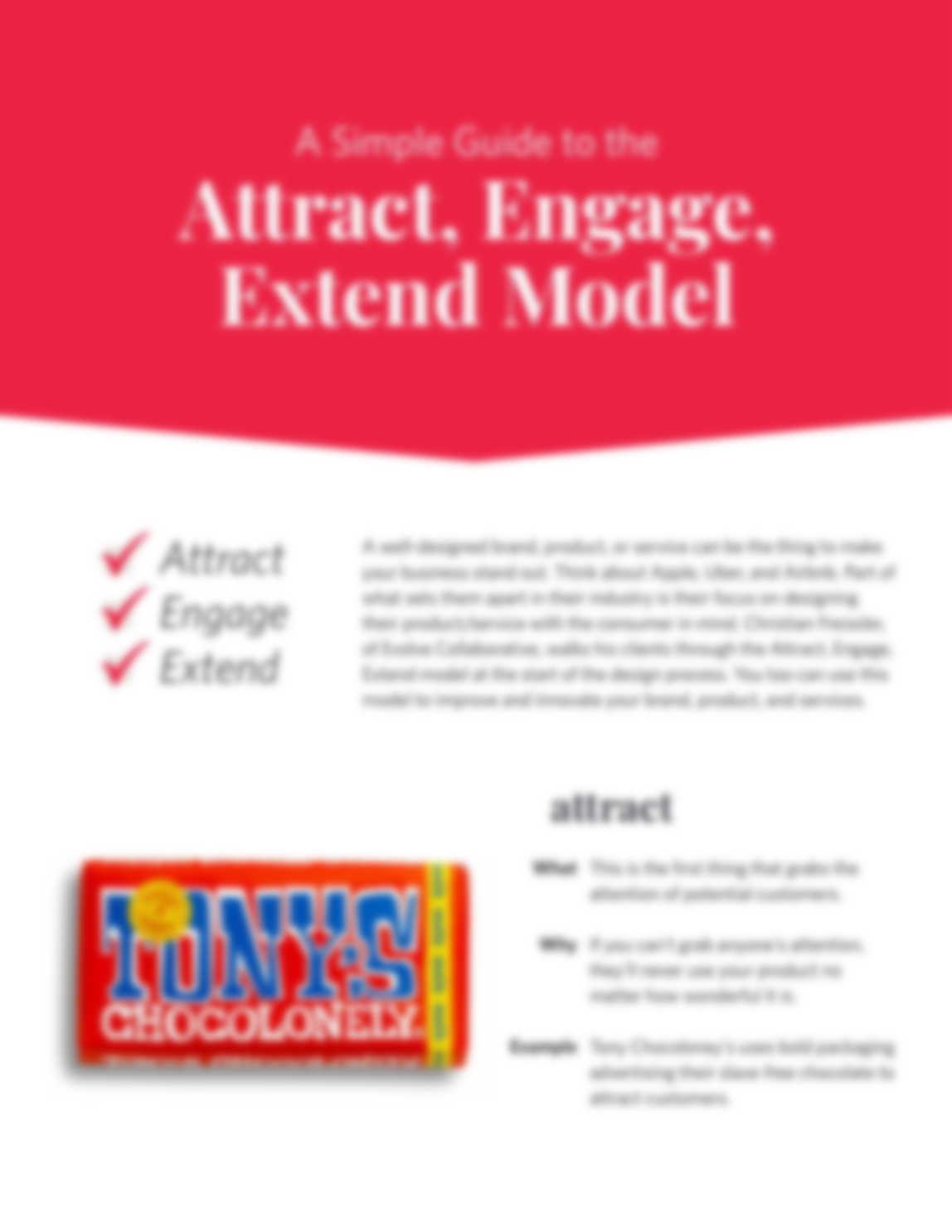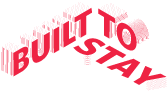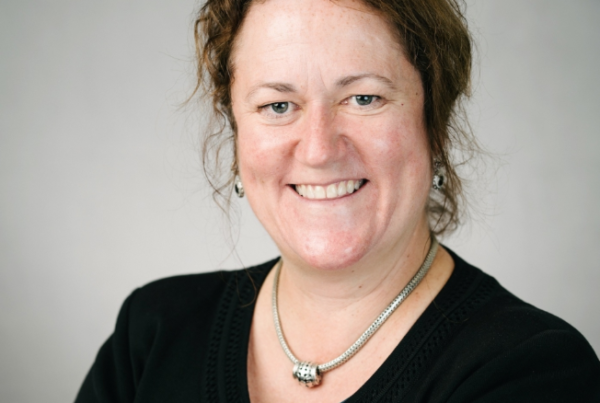Podcast Transcript
Bart: Herzlich willkommen, Christian.
Christian: Danke.
Bart: We’re excited to have you here. Built to Stay, as you know, is all about building businesses that will outlast the competition and be around for the long haul. I’m a firm believer that good design is integral to success and you’ve made a career out of experience design. And I’m excited for our discussion today to help our builders better understand how experience design thinking can take their business to the next level. First off, Christian, most of us know what graphic design is, but can you briefly explain what other types of design there are and really what your focus is?
Christian: Yeah, that’s actually a great question. I hear that often because my original discipline that I went to design school for is actually called industrial design or product design. And you often hear, “So what does an industrial designer do? Do you design industrial processes or something like that?” Well, it’s connected to that but it’s far from it sometimes. So there is actually a broad spread of design disciplines. And the one thing that I’m learning is that increasingly today in today’s world they’re more and more connected and they’re more and more coming together in this what you would call experience design today. So the classical disciplines, whether that’s graphic design, product design or whatever it is, are kind of meeting at the point where you’re creating experiences rather than just single entities of something.
Bart: So you’re saying that graphic design experience or graphic design or product design or other types of design all are kind of fitting under a broader umbrella of experience design, is that right?
Christian: Yeah, in a way. I mean I would say there’s certainly still just graphic design out there. Whenever you just design an identity for a company–
Bart: You need a logo. You need a–
Christian: Exactly, all of that. That’s the hard graphic design. There’s interaction design, which is mostly digital and there’s certainly product design or industrial design which is creating tangible products. But in experience design, all of these things come together because an experience can be just going across a widespread of all of these disciplines. Discipline can have physical touch points as well as digital touch points. Space can be part of this. If you think about retail or something like this. Experience design is a pretty broad field and brings together a lot of design disciplines today.
Bart: And you work with a team at Evolve Collaborative where you have graphic design capabilities, you have UI and UX design capabilities. You kind of have it all in house so that you can bring it together in the right way for any customer who has that kind of need, right?
Christian: Yeah, we’re fortunate to have a really small but very focused team and there are people who originally come out of either graphic design or industrial design or any of those disciplines. But we’re actually kind of trying to stretch these people quite far across that spectrum. We love to throw young talent into that kind of pot and just see how far they can stretch, which is pretty far usually.
Bart: Okay. So speaking of young talent, when did you first fall in love with design? You said you started with industrial design, but how did you come across that and decide to go after it and where did you go from there?
Christian: Yeah, it’s probably like so many designers, you kind of stumble across design at some point in a way that you realize that there is actually a job and a discipline for people that create things or create how things look like or feel like or use like and that’s the same thing that happened to me. I was interested in technology and engineering kind of things. And at some point I stumbled across the fact that there are designers that do this from a more aesthetic side of things. And I was fascinated with that and looked at documentaries and books and stuff and kind of learned about people and careers that were out there. And that’s certainly 20 years ago. So the design field was slightly different back then. But that’s what made me fall in love with this type of job.
Bart: And were you in Germany at the time?
Christian: I was in Germany at the time. Yeah. And I think the one thing that really made it click for me is I saw a documentary on TV about a very successful German designer called Hartmut Esslinger, who’s actually the founder of Frog Design, the original founder of Frog Design, one of the biggest design agencies in the world, I guess. And this was incredibly inspiring to me. Just seeing the influence that he had on really famous and popular consumer products out there. And learning the fact that you can be part of this development process from this side of things, not from engineering or from the technology side of things. That was absolutely spectacular for me.
Bart: Yeah, I think of design. When I think of Germany, precision engineering, precision design. BMW and Audi and Volkswagen, I mean all of those. And I’m talking about auto manufacturers. I’m sure there’s other examples. For me that’s what comes to mind. I mean, was that a competitive field when you got into it in Germany?
Christian: Yeah, I mean probably, I wouldn’t say I ever thought about it in that way, I think. I think when you grow up in southern Germany like I did, these companies that you mentioned and other technology companies are all around you and the fact that products are engineered and partly also manufactured in Germany at the time, at least, that’s something that’s quite top of mind. And so it’s naturally an area that you kind of get into and then again as I said, I think discovering that you can be part of this from a design side rather than from an engineering side. That was the thing that made it really special for me.
Bart: Yeah. Very cool. So Evolve Collaborative is the name of your business?
Christian: That’s right.
Bart: Why that name? Why evolve and why collaborative?
Christian: Why the collaborative? Well, I think everybody out there that was ever in the position of finding a name for their business knows that it’s quite a tedious process and can go any kind of way. And it was the same for us. We had a bunch of names that we were initially really excited about, but then when we dug a little bit deeper into them, there was either the last bit of connection missing or a bit of identification missing and landing on Evolve was more or less one of those things where you kind of throw that name out and then everybody goes home and to bed and then the next morning you come back and everybody goes, “You know, I think that’s actually it. I think that hits it on the head.” Right?
Christian: We were at a certain point in our careers, we all were at a point where we personally were looking for something that goes in a different direction. Something that is new, something that was more about us than about working for somebody else. It is certainly a word that we hear about 25 times in every new client conversation, coming from our clients towards us, which is kind of interesting. So it’s quite relevant in that way and it’s certainly something that’s also kind of a philosophy for us. I think we should be always thinking about evolving what we’re doing and not being kind of okay with the status quo.
Bart: Yeah, yeah. When I think about a business that is built to stay, it’s one that can evolve, right? Over time to meet the adapting needs of customers. Let’s talk a bit about the collaborative part. Is the design process a collaborative process?
Christian: There’s this famous saying, and I don’t know who it comes from, but you hear it a lot when you’re a design student, but when you’re an intern, design is not democratic and in some ways, it’s not because there’s always a creative director that says it has to be this way or this at the very end. Even for a creative director, there’s always a client who says, “I kind of want it this way.” So that much is true.
Christian: But I think the design process itself should be as collaborative as possible. I think the way of how we’re interpreting this is not only the collaborative aspect, which means we’re trying to include our client really from the beginning all the way through. We’re not this type of agency that takes a brief from you and then goes hiding away somewhere for six weeks and then comes back with a magic answer. We really believe in the idea that our clients are the experts in what they’re doing. We’re not experts in technology, we’re not experts in business. We’re experts in consumer behavior and consumer innovation. And so that’s what we bring to the table and we can never be better at what our clients are doing. So involving them and having them part of this process from the beginning is absolutely essential for us. And so making that part of our name is, in a way, our program or methodology to making sure that that kind of comes across.
Bart: Yeah, that makes sense. When it comes to your customers, what do you look for as a design agency? Are you looking for customers that really do know their customers really well and then you’re like, “Okay, this is going to be easy.” Or is it sometimes fun to take on a client that doesn’t know their customer very well and has a lot of room for improvement potentially?
Christian: Yeah. Both. I would say in a way that’s our strength. I would say that the fact that we can work with anything of that spectrum that you just mentioned is probably our strength, and it’s important for us that we can provide this almost 30-foot view to somebody that they sometimes cannot do or cannot grasp because they’re too close to what they’re doing and they’re just too tight and too intimate with the stuff that they’re working on. And as a consultant, being able to come in from the outside and step back a little bit and look at the broader kind of context of all of that is definitely a big part of the value that we’re providing. And it doesn’t necessarily matter so much if somebody is really good with knowing who they’re creating services or products for or if they have absolutely no idea, we can plug into that scenario from either end.
Bart: Some of our builders have businesses or are just starting their businesses and they’re saying to themselves, “Okay, I do think it’s valuable to have a clear understanding of what my customers want and I want to design something, a product or a service that really meets their needs.” What’s the right starting point? If you’re looking at this and saying, I need to get started on this, but I don’t really know how.
Christian: I think it depends on what industry you’re in and if you’re a brand new startup or if you have been in the business for a while. I think there’s different scenarios that you can find yourself in. Oftentimes, it’s about trying to communicate innovation to your customers or to your consumers. And that’s about knowing them intimately enough that you know what and how innovation or a new service or a new product needs to be communicated to them. But oftentimes, it’s also about creating that service in the first place or that product in the first place. How will I actually be able to put a product or a service into the market that consumers will crave or love? Or how do you make that initial connection? And usually our methodology for that is trying to get out there and trying to get to know these people, whether that’s through primary research or secondary research or expert interviews or basically also just through experience based on past projects and past clients. We’re usually able to take that perspective off the consumer that sometimes a client is not able to step into that easily.
Christian: Twenty years ago when I was graduating from design school, it was cool to land a job at an agency. Every young designer wanted to be at an agency because that’s where the cool stuff was made. Corporations were kind of looked at as the more stale and and kind of old-school design environments that actually on their end, reach out to design agencies to kind of get that fresh aspect and to get innovation going internally. I think that has changed fundamentally today. The whole startup world has kind of turned that upside down. We see more and more big corporations act like startups and act really agile and actually have really, really talented design departments internally that can do a lot of that stuff that big agencies were doing before.
Christian: And I think that’s kind of where we find our niche as well. I think the fact that we’re not one of these big agencies that move slowly and kind of always jump back on some of the processes that they have been using for years and we can be agile, we can be fresh, and we can be plugging in as sometimes an extension of these internal design departments, and we can really provide a value through our methodology of collaborating really closely with internal design departments and provide value that way.
Bart: How often do you think that a business needs to go back and really evaluate, “Are we providing what our customers need?”
Christian: Yeah, I think it’s an ongoing process, right? We keep hearing in this kind of service-driven or digital-driven design world that prototyping early enough is one of the tools to get something out there quickly. You also hear very often that you need to release a product fast to be able to learn from it and then to be able to evolve that service over time and make it better incrementally. And I think that’s certainly true. That’s really where sometimes the magic lies. It’s just like getting something out there and being able to very, very quickly get some data points of like who is actually using this? Who’s attracted by this? Who and how are people actually using the service? And then being able to innovate incrementally from there. And this old method of kind of developing for years and years and years and then throwing something on the market to be able to learn that you have maybe not thought about all of the different nuances and details that you have to, to have a successful product. That’s certainly something that we see dying out there.
Bart: So are there any other like pitfalls to avoid like that? Like one is spending just too much time designing and developing before actually getting it out in front of others? Are there others as well?
Christian: Spending too much time, not involving your target audience in the design process. If you take one of the methodologies out there, co-designing actually involving your customers or clients in the design process really early, really often with digital products, that’s super easy today, right? Like it’s incredibly simple to to create functional prototypes today and just actually bring them out there, get them in the hands of your target audience and learn really quickly from how and what way they’re using it and what’s actually missing. I think being able to analyze analogous experiences out there is really important. I think there’s so much stuff that has been done in other industries that you can learn from, in terms of how people adopted it and what mistakes have been made and that sometimes gives you a huge jump forward if you do that.
Bart: So when does design fail? Do you have any specific examples? And you don’t have to say the client’s name or go into detail, but have you seen design fail? Does design fail or if you do it right, is it always successful?
Christian: Yeah, I mean I’ve certainly seen design fail. And it usually fails when you’re not able to reach your target audience, when you’re not able to take into account the specific needs and the desires of the target audience. So that often happens when you’re trying to develop a product that is aimed at a too broad audience or even worse, you’re trying to reach everybody in the world and usually not reaching anybody. So that’s a common mistake. And I also think I’ve seen design fail when there’s not a really good relationship between the designer and whoever is the business lead or the project lead. There’s the old inspirational story of really intimate relationships between CEOs and lead designers. That’s something that we’ve seen certainly at Apple, between Steve Jobs and Jony Ive. And that’s probably one of the most well known stories out there. But I think that’s something that happens out there a lot. And just not with really well-known names. But really awesome design happens when the people that are taking the business shots are really trusting their designers and trusting the value of that, of the fact that designers are part of that table and part of those decisions.
Bart: So when I think about Apple, I think a lot about again, kind of that precision design, that really strong focus on design. And some people might wonder if that’s going overboard for their business. Is there an 80/20 rule with design? Potentially in some situations, get 80% of the value with 20% of the work.
Christian: There’s certainly an 80/20 rule that we talk about here all the time, which is usually you get to 80% with 20% effort and then it takes another 80% effort to get to the final 20% and that’s usually where either maybe there’s not enough budget to go the final 20%, maybe there’s not enough time, maybe there’s not enough buy in to actually let you go the final 20%. So sometimes as an agency you just have to power through that and just get the final 20% to make it successful. But no, on a broader spectrum, I would say, that we hear this thing a lot, that you have clients or you have people that want to develop a product and say, “We want this to be like Apple.” And that’s certainly because they see this incredible success, but what they don’t see is the amount of effort that a company like Apple puts into something and the incredible freedom that they have because of the money that they put behind this and the processes that they’re using and the technology that they’re using for development and manufacturing.
Christian: But the more interesting thing there is actually what clients really mean when they say, “We want Apple.” They basically just want whatever the Apple of their industry or of their area would be. Right? If that client is in, let’s say, medical, then they want to be the Apple of the medical world. They don’t want to be Apple. And that’s the thing where you have to actually really filter, right? You cannot just say, “Okay, let’s make you like Apple.” You have to then focus on what can this client be best at and what are the traits and what are the core values that they can move into releasing amazing product or amazing services?
Bart: Yeah, that makes a lot of sense. When it comes to thinking outside the box, you hear that phrase a lot. I think people associate it with design. What does that mean in the design world?
Christian: Yeah, I mean we certainly hear that a lot. I don’t think we use it a lot actually here. I would say hopefully we’re thinking . . . Well, I don’t know. I mean sometimes thinking outside of the box also makes a lot of sense. Right? One of my partners, bosses at a previous agency in London, Richard Seymour, he kind of coined that saying of “Give me the freedom of a tightly defined brief.” And that’s sometimes really the magic to it, right? As designers, thinking outside of the box sometimes leads to nothing. There’s nothing worse than white empty paper or a completely wonderful blue sky because it’s really hard to start somewhere. The more restrictions or the more factors, the more conditions of something already in place, the better you can actually deliver a solution for something.
Christian: And so that often starts with technology is a limiting factor. Business models are a limiting factor and then certainly bringing a particular consumer or a particular consumer group or tribe into the perspective. Those are all limiting factors but they’re also defining factors, right? They actually defined the box and then you can go crazy within that box.
Bart: Yeah, that makes a lot of sense. I worked once with a designer who I mentioned to them that I felt like I had a pretty good eye for design and she said, “Yeah, everybody says that.” Do you feel like that’s the case? Do you feel like most people feel like they know, they have an eye for design? And is there an element of truth to that? Like maybe they do have an eye for design, but they don’t actually know how to create it?
Christian: Yeah, yeah. No, absolutely. I think everybody has an eye for design. Just not everybody is a designer. There’s certainly truth to that. I mean in the end we are creating products or experiences or whatever it is for people out there and we are expecting from them a certain intellectual behavior and a certain taste and a certain eye for design, if you will, to be able to pick up on those things that we as designers put into it in the first place.
Christian: So yes, hopefully everybody out there has an eye for design and hopefully everybody out there has a feel for what’s quality versus what’s not quality or where somebody has put enough passion and enough sweat and tears into it to create something really outstanding. It’s not the superior design or the amazing technology or something that in the end decides about if a product or a service is successful. It’s oftentimes the fact that you also need to get it out there and that people have to discover it. Right? That’s the whole second part of this. You can have an amazing design that nobody knows about and it won’t be successful.
Bart: Yeah. Good point. So to wrap it up, Christian, tell us what are the top three things that you would recommend business owners think about when they think about how to really cater their product or service to their customer or their user? What are the top three things from a design perspective that they should be thinking about?
Christian: Yeah, I would probably look at it in three buckets that we call “attract, engage, extend.” So how do you attract somebody to a service or to discovering a product? How do you engage them in the experience and using it? And actually signing up for a service or signing up for products? And then lastly, how do you extend that experience beyond that, right? Yeah. Sometimes you buy something, take it home, you discover it, you use it for the first time. Oftentimes, that experience or product lets you down at some point and many designers or developers or companies don’t necessarily think about the extent. How do you actually keep your customers involved in something? How do you keep them interested? How do you keep them coming back? How do you deliver lasting value as part of a service or product to them?
Bart: Oh, that’s huge. If you can retain customers, it’s way less expensive, right? Then finding new. So attract, engage, extend. I liked that a lot. Christian, thank you for taking the time to talk to us today.
Christian: Thank you, that was pretty awesome. Thanks.
Bart: Builders, don’t forget to check out Evolve Collaborative. They’re based in Portland, Oregon, and also check out our show notes where you can find a link to them. It’s on builttostay.com as well as a downloadable piece to help you better implement what you learned today.
Join our email list to download our handout “The Attract, Engage, Extend Model”




